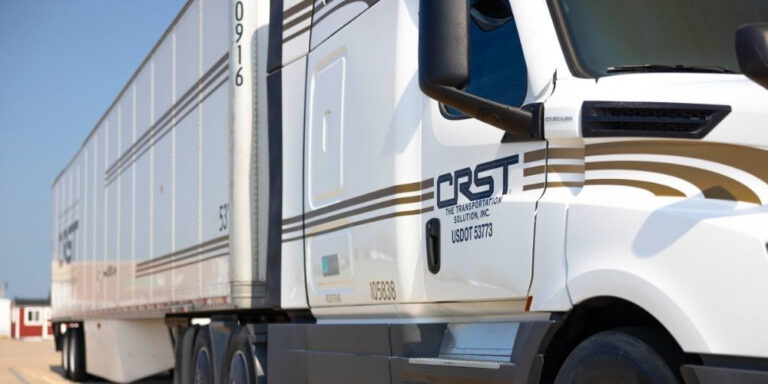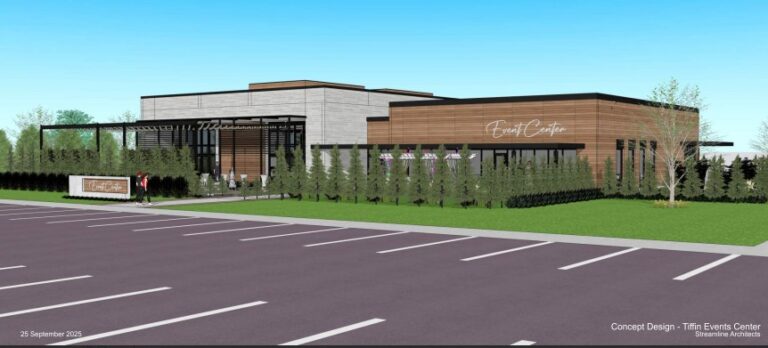Even as the Linn County Board of Supervisors voted unanimously July 29 to approve the second reading of a revised county ordinance governing utility-scale wind projects in the county, board members stressed the importance of protecting the county and its residents from storm-inflicted wind turbine incidents such as those occurring recently on a farm near Mechanicsville.
There are no current utility-scale wind projects in Linn County, and none have yet been proposed. But as Linn County supervisors noted July 29, the county needs to be proactive to protect its citizens in case of damage-causing failures like those near Mechanicsville, where a pair of wind turbines were struck by lightning, one in March 2023 and another in May 2024, setting one turbine ablaze and strewing fiberglass debris from turbine blades over an area spanning up to 750 acres.
“If this were a number of years ago, perhaps I would focus less on the debris cleanup,” supervisor Ben Rogers said in comments about Linn County’s ordinance revisions. “But seeing what has occurred recently in Iowa and locally with storms, and the fact that these (blades) are fiberglass and they can be displaced over large sections of land – whether it’s the owner or their neighbor, that we look at a financial instrument that protects the landowner who is leasing the land, protects their neighbors as best as we can, and creates an incentive for the owner and operator to clean this up in an acceptable manner.”
Reports from The Gazette indicate cleanup of the debris, which was spread over two landowners’ farms near Mechanicsville, has been slow and inconsistent, with the landowners facing the possibility of shouldering a significant portion of cleanup costs.
“After being out there, (the landowner) does have a large area of various amounts of fiberglass (spread) across his farm and his neighbor’s farm,” supervisor Louie Zumbach said of the Mechanicsville incidents. “That was very eye-opening for me. He verified that as (the turbine) was on fire, it flung fiberglass all over.”
In the wake of the incident, Mr. Zumbach said he was told by the landowner that two companies had offered bids for cleanup – one for $34,000, the other for “millions of dollars.”
Mr. Zumbach said he had “seen some benefit” at one time from wind turbines as a renewable energy source, “but after being out there, I’m not sure I would be interested.”
At a Planning and Zoning Commission meeting in May, Linn County senior planner Mike Tertinger said the county began considering revisions to its existing utility-scale wind ordinance about two years ago, in the wake of the county’s extensive, and occasionally contentious, review and eventual approval of industrial-scale solar projects near Coggon and near the former Duane Arnold nuclear energy plant in Palo.
The revised wind ordinance (see full text below) closely mirrors many of the provisions in the county’s current solar ordinance, including sections addressing the rights of participating and non-participating landowners near a project site, minimum setbacks, agricultural and environmental impacts, emergency response plans and decommissioning plans.
However, the proposed ordinance does include sections specifically addressing wind turbines, including maximum turbine heights, aircraft safety, impact on birds and their migratory paths, and analysis of “shadow flicker” caused by rotating turbine blades.
The proposal was narrowly recommended for approval by the Planning and Zoning Commission and forwarded to the supervisors for consideration, who approved the first reading of the ordinance in June but recommended a number of revisions designed to offer greater protections to the county and to participating landowners.
Those changes, unanimously approved by the full board of supervisors at the ordinance’s second reading July 29, included:
- Removing the required 1,000-foot setback from neighboring structures in favor of a setback totaling two times the height of the wind turbine;
- Increasing maximum allowable noise levels from the turbines from 45 to 55 decibels;
- Strengthening debris cleanup requirements, included added language on debris cleanup responsibility for the company installing the turbines and requiring a surety bond of 150% of the cost of decommissioning;
- Specified maintenance procedures for grounding equipment; and
- A clause encouraging the use of local labor whenever possible to build and maintain the turbines.
“I don’t know what the utility owner will accept in terms of our ordinance,” Mr. Rogers said, “in terms of what is attractive or what would perhaps give them pause in Linn County, (but) our charge is to ensure a balance. We’ve made a commitment here in Linn County to renewable energy through a variety of different sources, but our main focus is on protection of the county in the future, that taxpayers aren’t left holding the bag for an entity that either doesn’t exist or is acquired, merged or dissolved, that there are methods of cleaning up, and that the land is returned as promised in the contract and can be used once again.”
The county, Mr. Rogers said, needs “a financial instrument that protects the landowner who is leasing the land and protects their neighbors as best as we can, and it creates an incentive for the owner and operator to clean this up in an acceptable manner.”
Board chair Kirsten Running-Marquardt said she, too, visited the Mechanicsville farms impacted by wind turbine damage.
“What I saw was remarkable, with the debris field, how vast, how wide, how it was going into other neighbors’ properties,” she said. “When I left there, I am still committed to renewable energy here In Linn County, whether solar or wind, but (we need to) do it in a way that protects Linn County residents and neighbors.”
Ms. Running-Marquardt said she observed “three guys with grocery bags … wearing shorts, no protective materials” working on the cleanup, and that fiberglass strands were being caught by the wind and “flying around.”
“I do believe that we can move forward and be a global energy hub, not only for the state but the Midwest, something we can be proud of, and at the same time, find balance and make sure that we’re protecting the citizens of Linn County,” she said.
The third and final consideration of the revised utility-scale wind ordinance is set for the board’s regular meeting at 10 a.m. Wednesday, July 31.









